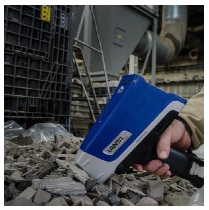RECYCLING INDUSTRIAL CATALYSTS ?
POSTED BY ALICE
We all know and understand the mechanisms and value of the autocatalyst recycling market, and the importance of its role in recovering precious PGMs, from both a financial and environmental perspective. There is, though, another sector of importance - that of industrial catalysts, used in a broad range of industrial processes, perhaps the most important being petroleum refining.
In 1949, Honeywell UOP(formerly Universal Oil Products) pioneered the use of platinum catalysts as the active agent in the upgrading of low octane petroleum to high-quality products, and this technology quickly became the principal method of producing high octane gasoline for automobiles and piston-engine aircraft. Catalysts are now indispensable in the petroleum refining industry for routine production of gasoline, diesel, and jet fuels and platinum has now become key to the production of gasoline - without it, refineries would not be able to produce enough gasoline to meet current requirements. Until the 1930s oil was only “fractionated” - separated by distillation - and the lighter, valuable portions sold, with the remaining, heavier fractions dumped as weight. Since then, a process is known as “cracking”, whereby large hydrogen molecules are broken down into smaller ones, has completely transformed the industry. Originally, thermal cracking, a process in which hydrocarbons present in crude oil are subject to high heat and temperature to break the molecular bonds, was used but by the 1950s this had been replaced by catalytic cracking as it produces more gasoline with a higher octane rating.
Unlike autocatalysts, those used in the petroleum industry are subject to heavy contamination from a range of materials including coke, sulfur, vanadium and after a time this contamination reaches a level that makes regeneration impractical and the catalyst must be scrapped. The disposal creates problems - because the various contaminants may cause serious pollution to soil and water, they are classified as hazardous wastes with restricted disposal in landfills.
Newly available technologies are now able to dramatically improve the amount of PGMs that can be captured from catalysts, in both the automobile and industrial sectors. For the latter, pyrometallurgical processes (extraction by heat) and hydrometallurgical processes (thermal treatment followed by leaching using a mixture of sulfuric acid and sodium chloride) are the main means of PGM extraction. The latter tends to be preferred nowadays, as it delivers a better yield, more efficiently.
Outside oil refining, industrial catalytic converters find application in several markets, including the chemical, textile, and steel industries where the emission of toxic gasses is high - indeed, anywhere it is possible to replace a polluting chemical reaction with a more environmentally friendly alternative. As increasingly stringent regulations are imposed by governments, the demand for catalysts will undoubtedly rise, particularly in China and Southeast Asia due to the continuous growth of chemical and textile industries in the region. Forecasts suggest that between 2017 and 2027, the market for industrial catalytic converters will grow by around 8%.

























